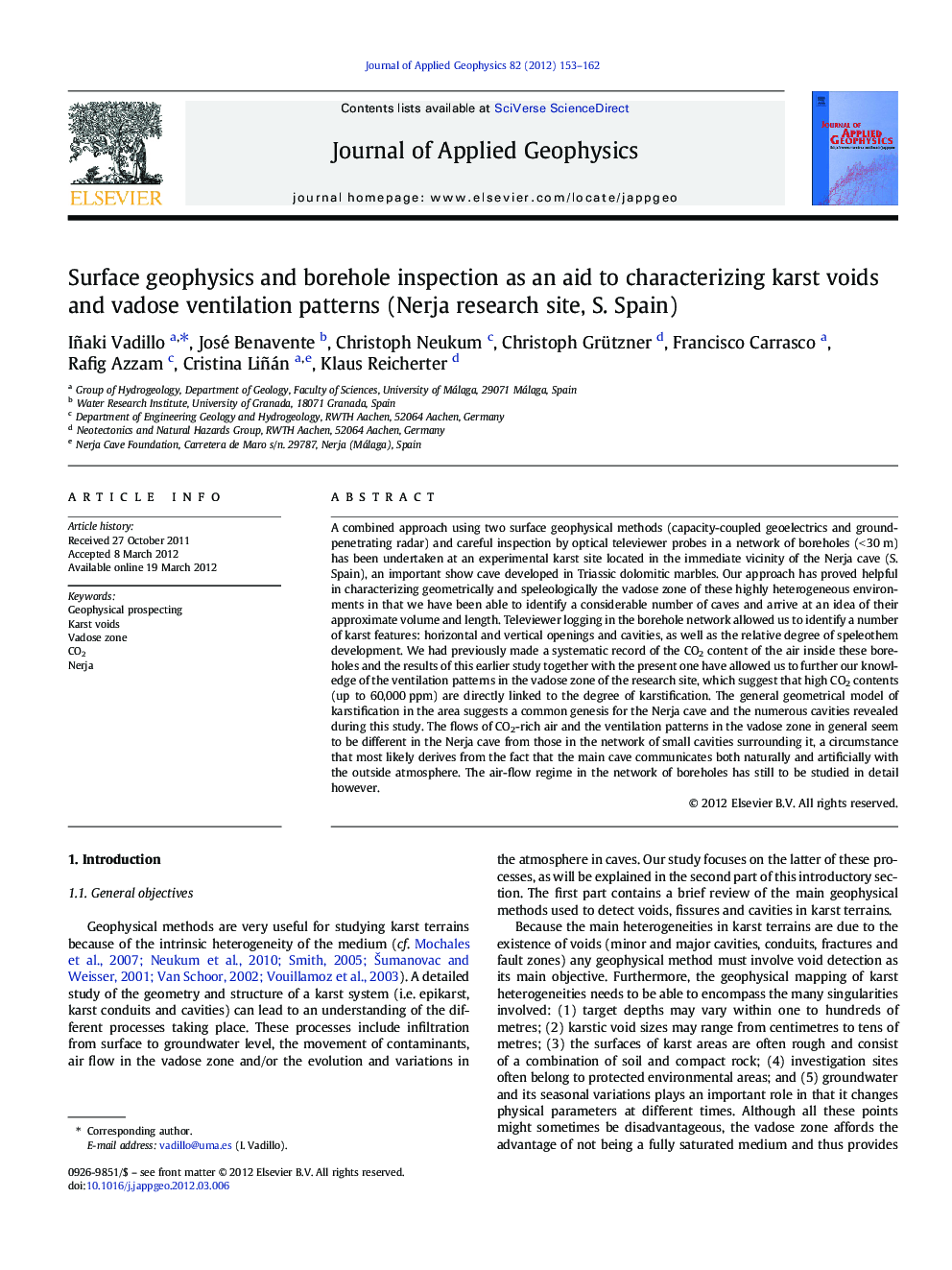| Article ID | Journal | Published Year | Pages | File Type |
|---|---|---|---|---|
| 4740554 | Journal of Applied Geophysics | 2012 | 10 Pages |
A combined approach using two surface geophysical methods (capacity-coupled geoelectrics and ground-penetrating radar) and careful inspection by optical televiewer probes in a network of boreholes (< 30 m) has been undertaken at an experimental karst site located in the immediate vicinity of the Nerja cave (S. Spain), an important show cave developed in Triassic dolomitic marbles. Our approach has proved helpful in characterizing geometrically and speleologically the vadose zone of these highly heterogeneous environments in that we have been able to identify a considerable number of caves and arrive at an idea of their approximate volume and length. Televiewer logging in the borehole network allowed us to identify a number of karst features: horizontal and vertical openings and cavities, as well as the relative degree of speleothem development. We had previously made a systematic record of the CO2 content of the air inside these boreholes and the results of this earlier study together with the present one have allowed us to further our knowledge of the ventilation patterns in the vadose zone of the research site, which suggest that high CO2 contents (up to 60,000 ppm) are directly linked to the degree of karstification. The general geometrical model of karstification in the area suggests a common genesis for the Nerja cave and the numerous cavities revealed during this study. The flows of CO2-rich air and the ventilation patterns in the vadose zone in general seem to be different in the Nerja cave from those in the network of small cavities surrounding it, a circumstance that most likely derives from the fact that the main cave communicates both naturally and artificially with the outside atmosphere. The air-flow regime in the network of boreholes has still to be studied in detail however.
► Identification of a considerable number of caves of different sizes by GPR and CCR. ► Identification of karst features and relative degree of speleothem development. ► The present results have furthered our understanding of the vadose zone ventilation. ► The high CO2 contents measured are probably linked to the degree of karstification. ► The ventilation patterns in the vadose zone, seem to be different to the main cave.
